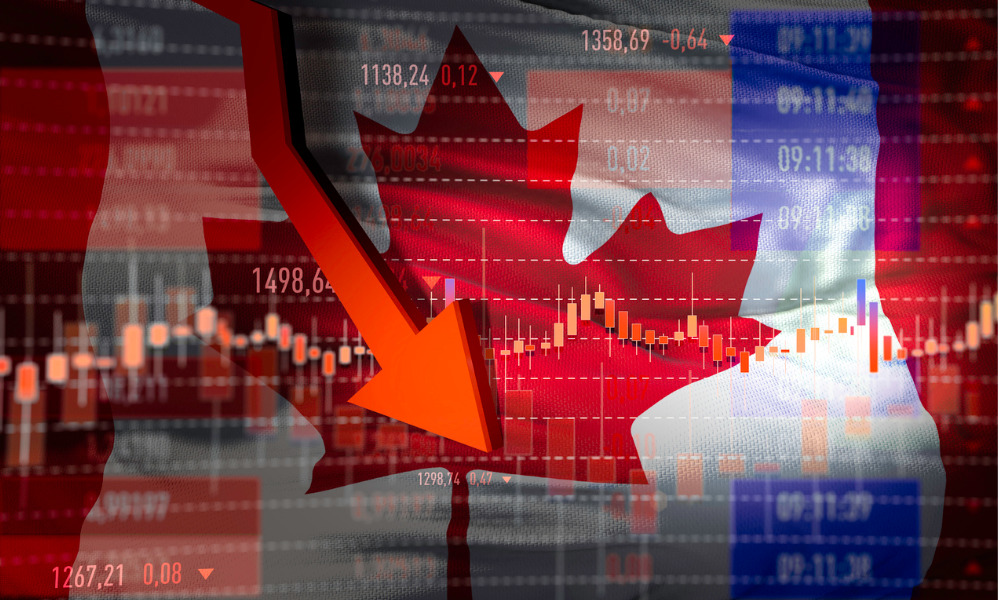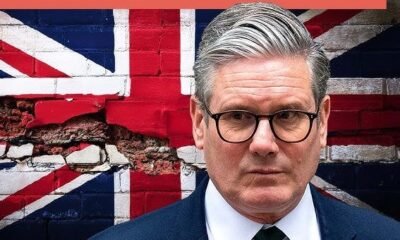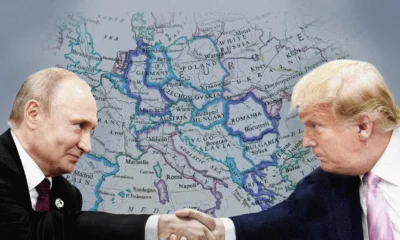Politics
PM Trudeau Not Willing To Back Down To Trump’s ‘Unfair Tariffs’. How Difficult Will It Be For Trudeau’s Successor To Safeguard Canada’s Economy? What Are Canada’s Options?
Published
9 months agoon

Canadian Prime Minister Justin Trudeau has pledged a strong response if U.S. President Donald Trump proceeds with imposing tariffs on Canada. Speaking to reporters, Trudeau emphasized that “everything is on the table” to counter any unfair trade measures. Addressing the issue during a press conference, he stated, “If there are unfair tariffs, we will respond robustly and we will be there to support Canadians and protect our interests.”
Trump announced during an Oval Office signing ceremony that his administration plans to impose a 25% tax on goods from Canada and Mexico, potentially starting February 1. However, this move, aimed at addressing trade imbalances, could lead to higher prices for American consumers.
Trudeau also responded to Trump’s recent executive order, which directs U.S. officials to evaluate the impact of the US-Mexico-Canada Agreement (USMCA) on American workers and businesses. The review will also assess whether stricter trade policies could help curb the flow of fentanyl and undocumented migrants into the United States.
Trudeau pointed out that Canada is already addressing border security concerns with a comprehensive plan worth over $1 billion. “Less than 1% of fentanyl and illegal immigrants entering the U.S. come from Canada, but we are committed to working collaboratively to ensure safety on both sides of the border,” he said.
Highlighting the deep economic ties between the two nations, Trudeau reminded that Canadian energy fuels American manufacturing, businesses, and homes. He noted that among America’s top five trading partners, Canada is the only one with which the U.S. has a manufacturing trade surplus stating that Canada buys more American-made goods than China, Japan, and Germany combined.
Trudeau also linked Trump’s vision of a U.S. “golden age” to the resources Canada can provide, including steel, aluminum, minerals, and energy. “Canada stands ready to work with the United States to create a booming and secure North American economy,” he said, adding that the alternative for the U.S. would involve sourcing from less reliable partners like Russia, China, or Venezuela in comparison Canada is a safe, secure, and reliable partner in an uncertain world.
For the US economy, the proposed tariffs could have a significant economic impact, given that Canada and Mexico together account for 30% of the value of all U.S. imports, according to federal trade data. While Trump claims that foreign exporters bear the cost of tariffs, American consumers are likely to face higher prices as retailers pass on some of the additional expenses.

How Difficult Will It Be For Trudeau’s Successor To Safeguard Canada’s Economy?
The return of U.S. President Donald Trump to the White House has sent shockwaves through Canada’s $2.1 trillion economy, adding to the challenges already facing the country. With stagnating growth and a housing crisis at home, Ottawa must now contend with the renewed threat of U.S. tariffs, targeting its largest trading partner and primary export market.
Economists agree that the task ahead is daunting. Tony Stillo, Director of Canada Economics at Oxford Economics, points out the steep political and economic hurdles awaiting the next leader.
Trump’s protectionist stance, while not heavily emphasized in his inaugural address, was reinforced just hours later when he announced plans for a potential 25% tariff on goods from Canada and Mexico starting February 1. This prospect poses a serious threat to Canada’s economy, where 80% of exports are U.S.-bound and account for roughly 20% of the country’s GDP. A tariff of this magnitude could push Canada toward a recession, according to Stephen Brown, Deputy Chief North America Economist at Capital Economics.
Despite the ominous implications, some experts believe Trump’s tariff threats might be a negotiating tactic ahead of the United States-Mexico-Canada Agreement (USMCA) review next year. Many opine that Trump is a negotiator and will likely seek concessions to claim a better deal. Still, Canada’s economic vulnerability remains a pressing concern.
For one, a tariff war with the U.S. would significantly impact Canadian exports and, by extension, the economy.
Cards On The Table
Trump’s grievances with Canada extend beyond trade to issues like border security and defense spending within NATO. Addressing these could provide Ottawa with an opportunity to mitigate tensions, economists suggests that increasing defense purchases from the U.S. could simultaneously meet NATO spending targets and enhance border security.
Canada also holds some leverage in negotiations. As the source of about 20% of the crude oil consumed in the U.S., Ottawa could theoretically threaten to cut off supplies, though such a move would come with significant risks.
Canadian Foreign Minister Mélanie Joly recently emphasized Ottawa’s readiness to respond to any tariff escalation, stating, that the country is ready for a second round and a third round of negotiations. Finance Minister Dominic LeBlanc echoed this sentiment, warning that U.S. tariffs would be “a mistake.”

Canada’s Troubles
Domestically, Trudeau and his Liberal Party face mounting challenges. Discontent over unaffordable housing and strained public services like childcare and healthcare has fueled dissatisfaction. Adding to the government’s woes is the controversial carbon tax, which has become a key issue for the opposition Conservative Party, led by Pierre Poilievre.
Introduced in 2019 to encourage a shift toward cleaner energy, the carbon tax has risen sharply, from CA$20 per tonne to CA$80 ($55.5) and is slated to reach CA$170 ($118) by 2030. Poilievre has vowed to repeal the tax, a move that could reduce petrol prices by 25 cents per liter. However, scrapping the tax would also eliminate rebates meant to offset higher fuel costs for families, making the overall financial impact variable depending on individual circumstances, Stillo notes.
Immigration has also become a polarizing issue. While it has historically driven Canada’s population growth, a record 3.2% surge between 2023 and 2024—its highest annual increase since the 1950s—has strained housing, healthcare, and education systems. In response, Trudeau announced significant cuts to migrant intake in October, disrupting lives and business plans.
This shift reflects growing public unease about immigration. A recent poll by the Environics Institute revealed that 58% of Canadians believe the country accepts too many immigrants, a sharp 14-point rise since 2023 and the most significant shift in sentiment since polling began in 1977. Although anti-immigration parties have made little progress, doubts about the integration and economic roles of immigrants are growing.
For years, Canada prioritized skilled migrants, but policies shifted during the COVID-19 pandemic when businesses struggled to find workers. This led to temporary visas being issued for roles like those in retail and food services, creating long-term challenges, says Lars Olsberg of Dalhousie University. Reduced immigration intake, coupled with eased mortgage lending rules, is already impacting the housing market, with rents beginning to decline.
Beyond immigration, Canada faces deeper structural issues, including low productivity and weak business investment. Olsberg noted the rising inequality and insecurity fueling public anger and anxiety, worsened by global disruptions like COVID-19 and the war in Europe. Opposition leader Poilievre has skillfully directed this frustration toward Trudeau, while Donald Trump’s return to the political stage has added yet more uncertainty.

What Options Does Canada Have?
Canada is currently facing a daunting economic and political ecosystem and its options for addressing these challenges require a combination of short-term pragmatism and long-term vision.
Here’s a deeper contemplation of Canada’s possible paths forward –
1. U.S. Trade Tensions – The return of Donald Trump and his protectionist policies threatens Canada’s trade-reliant economy. Since the U.S. is Canada’s largest trading partner, accounting for 80% of its exports, even small disruptions can have outsized effects.
Options – Canada could emphasize its strategic importance as the U.S.’s largest supplier of crude oil and a key partner in maintaining North American energy security. This gives Canada bargaining power, though leveraging it may escalate tensions.
At the same time, Canada must accelerate efforts to reduce reliance on the U.S. by strengthening trade relationships with the European Union (via CETA), the Indo-Pacific region, and Latin America.
Proactive Negotiations – Trump’s tariff threats could be a negotiating tactic. Canada should prepare to make concessions that safeguard critical sectors, such as auto manufacturing and agriculture, while seeking to minimize damage to the broader economy.
2. Addressing Domestic Pressures
Canada’s housing crisis, overstretched public services, and carbon tax controversy have fueled public discontent. These issues demand immediate and balanced solutions.
Options:
Canada could look at encouraging housing supply by offering incentives to developers and cutting red tape and address speculation by imposing stricter taxes on vacant properties and foreign ownership.
Instead of scrapping the carbon tax, explore revenue-neutral approaches, ensuring that rebates and benefits are clearly communicated to the public. Simultaneously invest more visibly in green energy projects and job creation to demonstrate tangible benefits.
The Last Bit
Canada’s options are not easy or risk-free. Balancing short-term economic stability with long-term structural reforms will require strong leadership, clear communication, and a willingness to make tough compromises.
As Trudeau prepares to step down, his successor will face the critical task of addressing intertwined challenges—domestic pressures, trade tensions, and structural economic vulnerabilities. Hence, Trudeau’s successor must be pragmatic, leveraging Canada’s strengths—its resource wealth, skilled workforce, and global reputation—while addressing domestic vulnerabilities and preparing for a potentially turbulent era in U.S.-Canada relations.
You may like
-


Taiwan’s ‘Historic’ TSMC Deal, A Win Or The End Of Its ‘Silicon Shield’ As China Threatens? A Jittery Taiwan Watches Trump’s Moves On Ukraine, Wondering, Could We Be Next?
-


America And China’s Thirst For Gold In 2025 Is Draining Other Countries’ Reserves; Here’s Why?
-


Trump’s Latest Tariff Move on Mexico and Canada. Import Taxes Back on Track Hinting At A Full Blown Trade War!
-


Germany’s Friedrich Merz’s Big Balancing Act—Trump, Borders & Europe’s Future. Can He Deliver?
-


United Kingdom To Unleash Its ‘Harshest’ Sanctions On Russia Yet—But Will They Bite? How Trouble Is Brewing For Keir Starmer At Home. Shamed For Volunteering British Troops In Ukraine
-


How It’s Not Trump But Vladimir Putin That Europe Is Stinging From: Trump’s U-Turn On Europe, Russia’s Strong Supply Chain—A Formidable Opponent!
